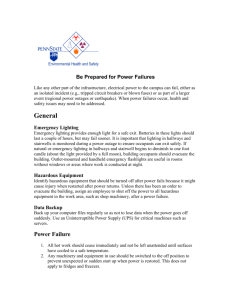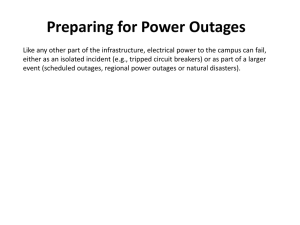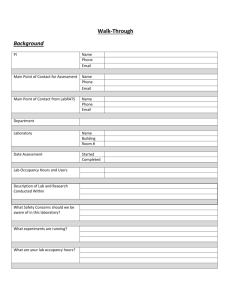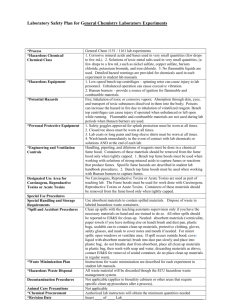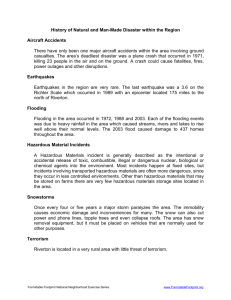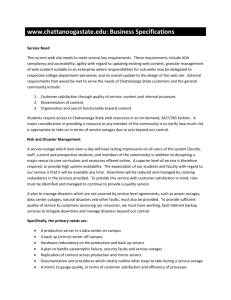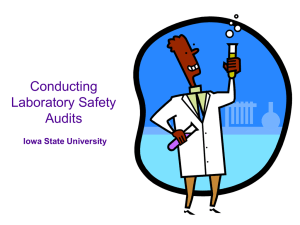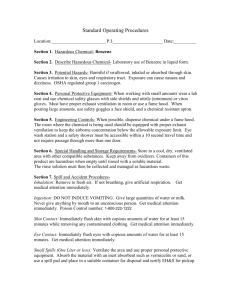Power Failure in
advertisement
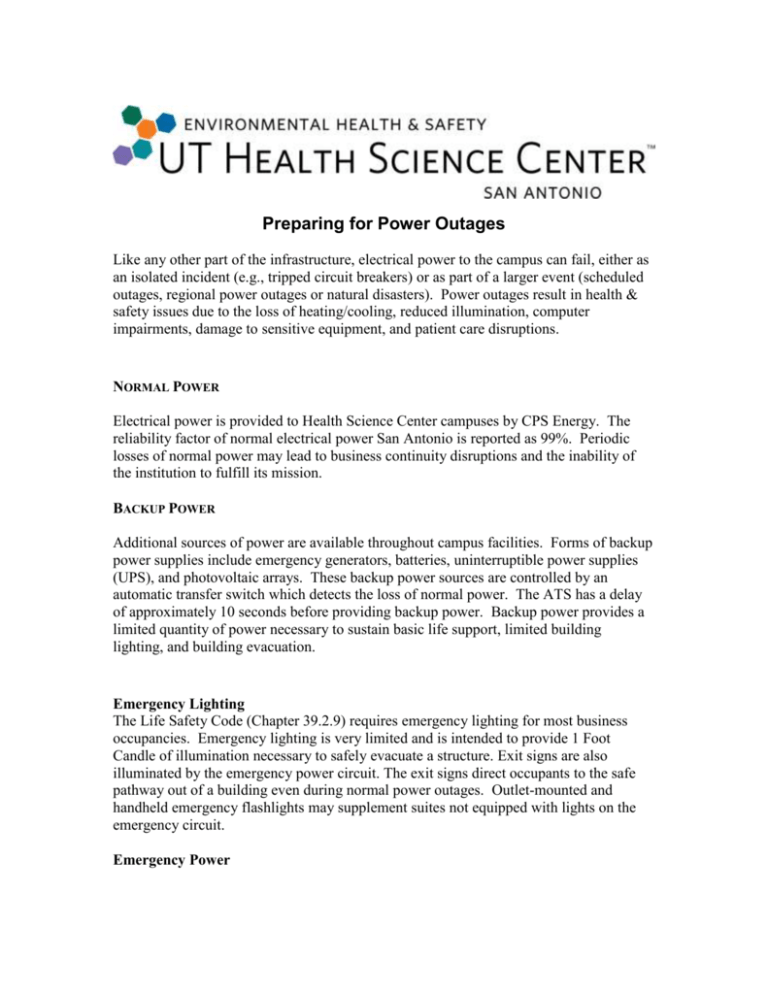
Preparing for Power Outages Like any other part of the infrastructure, electrical power to the campus can fail, either as an isolated incident (e.g., tripped circuit breakers) or as part of a larger event (scheduled outages, regional power outages or natural disasters). Power outages result in health & safety issues due to the loss of heating/cooling, reduced illumination, computer impairments, damage to sensitive equipment, and patient care disruptions. NORMAL POWER Electrical power is provided to Health Science Center campuses by CPS Energy. The reliability factor of normal electrical power San Antonio is reported as 99%. Periodic losses of normal power may lead to business continuity disruptions and the inability of the institution to fulfill its mission. BACKUP POWER Additional sources of power are available throughout campus facilities. Forms of backup power supplies include emergency generators, batteries, uninterruptible power supplies (UPS), and photovoltaic arrays. These backup power sources are controlled by an automatic transfer switch which detects the loss of normal power. The ATS has a delay of approximately 10 seconds before providing backup power. Backup power provides a limited quantity of power necessary to sustain basic life support, limited building lighting, and building evacuation. Emergency Lighting The Life Safety Code (Chapter 39.2.9) requires emergency lighting for most business occupancies. Emergency lighting is very limited and is intended to provide 1 Foot Candle of illumination necessary to safely evacuate a structure. Exit signs are also illuminated by the emergency power circuit. The exit signs direct occupants to the safe pathway out of a building even during normal power outages. Outlet-mounted and handheld emergency flashlights may supplement suites not equipped with lights on the emergency circuit. Emergency Power Emergency power is required by code for certain equipment which directly supports the safety of building occupants. Examples include fire pumps, fire alarm systems, fire doors, surgery suites, and certain exhaust fans. The Health Science Center also installs emergency power to support clinical and research activities. When operating on emergency power, normal building utilities such as lighting, elevators, water, vacuum, etc are diminished. Power Failure – Preparing Ahead of Time Identify hazardous equipment that should be turned off after power fails because it might cause injury when restarted after power returns. Unless there has been an order to evacuate the building, assign an employee to turn off power or unplug to all hazardous equipment in the work area, such as shop machinery, after a power failure. Data Backup If you are not connected to a central computer server, back up your computer files regularly so as not to lose data when the power goes off suddenly. Use an Uninterruptible Power Supply (UPS) for critical machines such as servers. UPS are designed to last for a limited amount of time (the amount of time varies with the size of the UPS). Power Failure - Office 1. All welding, soldering, hot plates, coffee warmers, etc should cease immediately and not be left unattended until surfaces have cooled to a safe temperature. Turn power off to the hot work device. 2. Switch off electrical equipment to prevent unexpected or sudden start up when power is restored. Office equipment that should be switched off includes copiers, printers, computers, monitors, microwaves, and coffee pots. This does not apply to fridges and freezers. 3. Turn off all light switches. The voltage may fluctuate and damage lights that are on. Do not use candles or other type of flame for lighting. 4. Avoid ignition sources such as lighters, cigarettes, and candles. 5. Set all equipment and appliance switches to the OFF position. This is to avoid tripping the circuit breakers, blowing fuses, or damaging equipment from power surges when normal power is restored. 6. Do not use elevators during a power outage. It may become inoperative and unable to return to the primary floor without normal power. 7. If it becomes necessary to evacuate the premises during a power failure, be sure to protect all valuables and make sure that all equipment is safe when the power comes back on. Leave building and go to the assigned assembly place. 8. Assist disabled persons in exiting the building. If these persons are unable to use the stairs, call University Police for assistance. 9. Listen for instructions via HSC alert. Power Failure - Laboratories A power failure in a building can result in hazardous conditions in laboratories. Secure all experiments that are in progress. Power outages can result in chemical fume hood or biosafety cabinet failure. Room air pressures may be reduced in laboratories resulting in lack of adequate exhaust. Pressure may buildup in equipment that relies on electronic control. Control of chemical reactions that require cooling dependant on electrical power can fail. A flammable atmosphere may accumulate in enclosed spaces if ventilation is not available. In a brown-out or black-out condition, power failure may damage sensitive equipment or experiments. A brief period should not drastically affect the temperature in environmental rooms such as coldrooms. However, sensitive electronic equipment, instruments and computers should be shut down before a planned outage. Power surges caused by resuming power may damage equipment or create an unsafe condition. Laboratory Requirements – At all times 1. Designate an emergency contact for information in the event of an unexpected shut down. Verify that the laboratory emergency contact information displayed on the outside placard is correct. If not, contact EH&S at 567-2955 to correct this information. 2. All temperature controlled devices such as freezers must contain a current emergency contact name and phone number with the Facilities Control Room. 3. Maintain a log of equipment that must be reset, restarted or require special attention. Keep this log available and current. Equipment that runs unattended should be programmed to shut down safely and not restart when power returns. If 4. 5. 6. 7. a special manual or directions are necessary to restart equipment, ensure that the equipment manual is readily available in the lab. Identify an emergency source of dry ice if you have items that must be kept cold. (Note: Refrigerators and freezers will maintain their temperature for several hours if they are not opened. Do not use dry ice in walk-in refrigerators or other confined areas because hazardous concentrations of carbon dioxide gas will accumulate.) Supply an emergency source of light (i.e. flashlights) and notify all personnel as to the location and operation of such equipment. Do not overload any power strips. Extension cords must be UL listed and may only be used for temporary or emergency situations. Laboratory Requirements – Planned Outages: Turn off lights and equipment that do not need power. All electrical equipment is susceptible to serious damage due to power surges. Unplug all equipment not deemed critical. Plug critical equipment in a designated emergency power outlet. Check on incubators and verify that they are on emergency power or that the cell lines will be kept at the appropriate temperatures in the event of power failure. Check if your cold room is on emergency power. If not, move temperature sensitive materials or arrange for a dry ice delivery. Shut down experiments that involve hazardous material or equipment which automatically restarts when power is available. A disruption may damage computers, equipment or instruments with automatic resets or logic functions. Turn these off if it is not essential for continuous operation. Back up computers routinely. Freezer preparation for power outage: 1. Defrost/de-ice freezers and verify the integrity of the inner and outer door seals. 2. Place all freezers and ultra-low freezers containing sensitive material on emergency backup power supply. Emergency power outlets are recognizable by the red plate that covers the outlet (see below). Items plugged into these outlets will remain on generator power during a power failure. All freezers that need emergency power must be on this type of plug: NORMAL POWER EMERGENCY POWER Power outlets that do not have a red plate are not on emergency power. In the event of a power failure no power will be supplied to these outlets. Freezers plugged into this type of plug should not contain sensitive material: 3. Place dry ice in freezers and ultra-low freezers or connect to liquid nitrogen backup system. Do not place dry ice in refrigerators due to potential for damage. 4. Raise ultra-low freezer temperatures to maximize range to limit potential for compressors overheating due to loss of conditioned air in the building. 5. Place liquid nitrogen back-up systems on standby mode. 6. Top off all liquid nitrogen dewers. 7. Refrain from opening freezers if at all possible. 8. Keep an adequate supply of dry ice available for when the power is off, if necessary. While the Power is Off Do not conduct experiments or work with hazardous materials (biological, chemical or radiological) during power outages. Ensure experiments, equipment, machinery or apparatus are stabilized or safe. Cap volatile materials in fume hoods and close the sash. Do not use laboratory facilities during the shutdown or enter areas that have storage of material that require mechanical ventilation. Check equipment on emergency power to ensure that it is running properly. Do not connect items not intended to be on emergency power during a disruption period. Reschedule experiments due to limited availability of lighting, handwashing, toilets, air conditioning, medical gases, and vacuum. Check chemical fume hoods. Stop any operations that may be emitting hazardous vapors. Cap all chemical containers that are safe to cap, and then close the fume hood sashes. Leave the room and contact EHS if you notice physical symptoms due to exposure. Disconnect equipment that runs unattended, and turn off unnecessary lights and equipment. This will reduce the risk of power surges and other unforeseen damage or injury that could result when the power comes on unexpectedly. Avoid ignition sources such as Bunsen burners, candles, lighters, cigarettes, or strikers during power outages. When Normal Power is Restored Reset or restart equipment. Ensure that equipment is returned to a safe operation mode. Check chemical fume hoods for proper operation. If fume hoods are not exhausting do not use hazardous chemicals. Contact Facilities Management at 567-2947 if your chemical fume hood is not operating properly. Check cold / environmental room set points and if necessary have the controls reset. Emergency Contacts (Getting Assistance) UTPD - 567-2800 (non-emergency); 567-8911 (emergency) EH&S – 567-2955 Facilities Management – 567-2947
